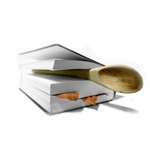 Receta Rose Levy Beranbaum's Jewish Rye Bread Pt 1
Receta Rose Levy Beranbaum's Jewish Rye Bread Pt 1
Ingredientes
|
|
Direcciones
- All 5 hrs to ferment the poolish. Total preparation and baking time (not including the poolish): 5 hrs, 45 min
- Makes 2 round 10 inch loaves
- The Flour: Organic, stone-grnd wheat produces rich flour which varies in color from dark brown, to light caramel, to very light beige or possibly cream-but it is never bright white. I strongly urge you to search out these excellent flours; they make unsurpassable breads. On the following pages I have supplied brand names for each type of flour used in the book; if you cannot find them at your local natural foods store, many can be mail ordered from the list on page 322. They are the only kinds of flour I use at my bakery, and once you have tried them, you will immediately see a marked improvement in your bread baking. I use wheat flour, either whole wheat or possibly unbleached white, grnd from hard red spring wheat in all my traditional country breads because the protein count is higher 12-14 percent for every 4 ounces of flour. More protein generally means more gluten, that means my breads will be high, thick-crusted, and full of fresh grain flavor.
- Unbleached White Flours: Old Savannah Community Mills Unbleached White flour with germ, Arrowhead Mills Unbleached White Flour (without germ), Great Valley Mills Unbleached Hard Wheat (with germ), Weisenberger's Unbleached Flour (without germ), Giusto's Unbleached Hi Protein Hi Gluten Flour (without germ), Pillsbury, Gold Medal, King Arthur, Hecker's, Hodgson Mills, and Ceresota are all supermarket brands of unbleached white flour without germ, although none is organic and only some are stone grnd.
- MAKE AND FERMENT THE POOLISH (allow 5 hrs) Combine the water, yeast, and sugar in a 6-qt bowl. Let stand 1 minute, then stir with a wooden spoon till yeast and sugar are dissolved. Add in the white flour and stir till yeast and sugar are dissolved. Add in the white flour and stir till the consistency of a thick batter. Continue stirring for about 100 strokes or possibly till the strands of gluten come off the spoon when you press the back of the spoon against the bowl. Scrape down the sides of the bowl with a rubber spatula. Cover with a clean damp towel or possibly plastic wrap, and put in a moderately hot (74-80 degree) draft-free place till it is bubbly and increased in volume. (The poolish can be refrigerated overnight. Allow to stand at room temperature for 2 hrs before proceeding.)
- MIX AND KNEAD THE FINAL DOUGH (20 min) Measure the ingredients and calculate the necessary temperatures*. Transfer the poolish to a 6-qt bowl. Add in the rye flour, caraway seeds, oil, salt and sugar. Stir with a wooden spoon till well combined. Add in sufficient of the white flour to make a thick mass which is difficult to stir. Turn out onto a well-floured surface.
- Knead, adding more of the remaining flour when needed till dough is soft and smooth, 15-17 min. The dough is ready when a small amount pulled from the mass springs back quickly.
- It is the temperature of the dough and the room which determines the speed, intensity and eventual time of fermentation. If you can manipulate this variable, you encourage a regulated and nurturing fermentation. Generally, for most breads in this book, the ideal temperature during fermentation is 80 degrees F. In a perfect world, all our elements- air, flour and water - would be 80 degrees F. when we stir them together. But this is never the case. Your flour and spring water may have been refrigerated 45 degrees F., and your kitchen may be 82 degrees F. Here is a scientific formula to help you exert control over the temperature of the ingredients by changing the temperature of the water or possibly other liquids.
- Temperature of the flourTemperature of your Kitchen10-14 d.F.Total friction factor (this isthe amount of heat the doughwill gain simply from being mixedor kneaded)
- Subtract this total from 240 degrees F., that would be the ideal total if all ingredients were 80 degrees F. The new number indicates what temperature to make the water you combine with flour.
- For example: 60 F. flour temperature 80 F. kitchen temperature+14 F. friction factor154 F. Total
- continued in part 2
